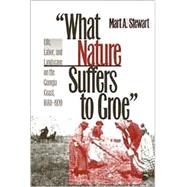
Note: Supplemental materials are not guaranteed with Rental or Used book purchases.
Purchase Benefits
What is included with this book?
| List of Illustrations | p. ix |
| Preface to the Paperback Edition | p. xi |
| Acknowledgments | p. xvii |
| Prologue: Sea Islands, Tidewater, and Ascents upon the Main | p. 1 |
| The Georgia Plan | p. 21 |
| The Inhabited Landscape | p. 53 |
| "What Nature Suffers to Groe" | p. 87 |
| "All under Bank" | p. 151 |
| The Limits of the Possible | p. 193 |
| Epilogue: Place over Time | p. 243 |
| The Population of Coastal Georgia, 1800-1920 | p. 253 |
| Notes | p. 259 |
| Selected Bibliography | p. 339 |
| Index | p. 361 |
| Table of Contents provided by Ingram. All Rights Reserved. |
The New copy of this book will include any supplemental materials advertised. Please check the title of the book to determine if it should include any access cards, study guides, lab manuals, CDs, etc.
The Used, Rental and eBook copies of this book are not guaranteed to include any supplemental materials. Typically, only the book itself is included. This is true even if the title states it includes any access cards, study guides, lab manuals, CDs, etc.